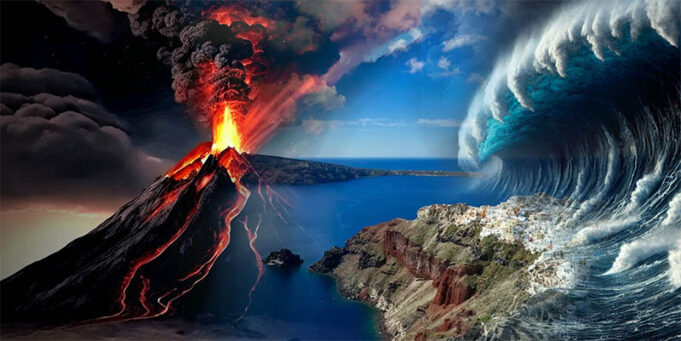New Crack in Anhydros Could Lead to Disaster: “1,200 Earthquakes Between Santorini and Kolombos Since January 26”
Athanasios Ganas, Director of Research at the Geodynamic Institute, described the seismic activity in Santorini, Anhydros, and Amorgos, outlining a potential “horror scenario” for the region. He warns of a worst-case scenario involving volcanic and seismic activity in the southern Aegean.
According to Ganas, “The current seismic sequence could cause a new 15 km-long crack on Anhydros Island, which in turn could produce an earthquake over 6 magnitude on the Richter scale!” If this happens, it could trigger a tsunami, landslides in Santorini’s caldera, and the activation of the Kolombos volcano.
This is part of a larger “horror scenario” involving three simultaneous events: an underwater volcanic eruption releasing toxic gases across the region, an earthquake, and a tsunami potentially hitting neighboring islands, depending on the intensity of the seismic activity.
Specifically, Ganas explained: “Today, we have evidence of seismic activity near Anhydros Island. We continue to experience an active earthquake sequence. We cannot predict the exact range of the earthquake, but there’s a tectonic crack 15 km long near Anhydros, which, if activated, could cause a 6 Richter earthquake. We do not want this scenario because it would lead to a tsunami, landslides in Santorini’s caldera, and could also activate the Kolombos volcano.”
Earlier this morning, a 4.8 magnitude earthquake occurred at 04:45, followed by a 4.9 magnitude tremor. “This scenario is the second priority in terms of probability,” he added. “It’s a better scenario because it avoids the risks of landslides and a tsunami.”
To emphasize the magnitude of the geological phenomenon, Ganas pointed out that in the last 72 hours, more than 41 earthquakes of magnitude over 4.5 had occurred. However, the National University of Athens provided an additional perspective, revealing that seismic activity began as early as June 2024.
On January 26, a new group of earthquakes appeared to the east of the Kolombos volcano, with a strong aftershock the following day. By January 29, over 1,300 earthquakes had been recorded. By February 1, more than 2,500 earthquakes were logged, and seismic activity began to increase with tremors larger than magnitude 4.0.
From February 1 to 4, there were 43 earthquakes with magnitudes of 4.0 or more. The strongest ones occurred on February 3 at 14:17:41 (magnitude 5) and on February 4 at 04:46:07 (magnitude 5). This indicates that seismic activity is escalating, not declining.
Later in the afternoon, a 5-magnitude earthquake was felt as far as Athens.
As a precaution, over 11,000 residents have evacuated Santorini in the past two days, with all of them sleeping outside their homes as no one is allowed inside. The situation is highly alarming, and panic is now dominating the area.
